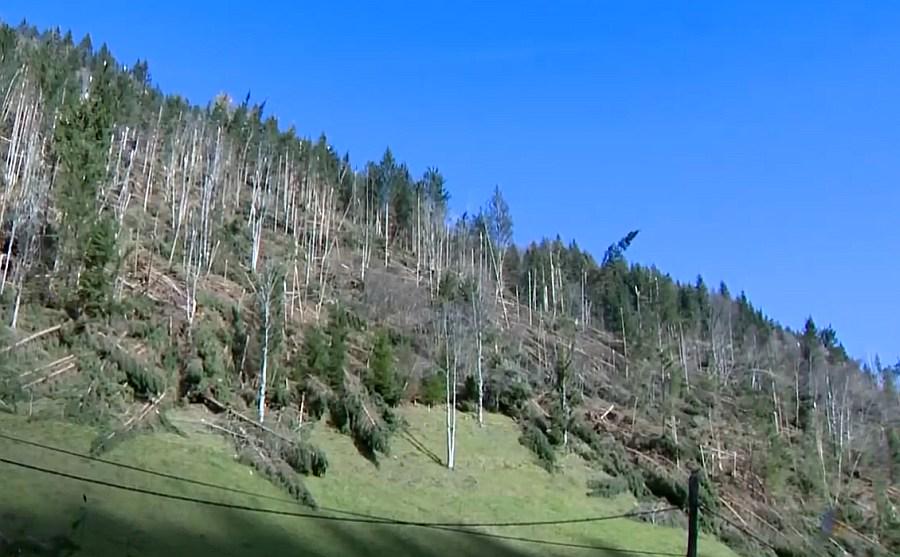
The wind damage from the night between the 29th and 30th of October in the Koroška region was ten times smaller than last year's damage. But despite that, around 280,000 m3 of wood was destroyed and 90 percent of the damaged wood were conifer trees. The forest's deciduous trees had already lost their leaves and did not give the strong winds much resistance, which is why conifers suffered most of the damage. Andrej Breznikar says most of the Koroška forests are made up of in conifers, and adds: "Spruce trees were favoured from historical reasons, on the basis of so-called German teachings. In the 19th century the planting of spruce trees intensified as it was very useful. But the spruce has difficulties growing in places which are not its natural habitat. Its roots are very shallow and it is vulnerable to droughts, which is why natural disasters affect them. Besides that, after every such disaster spruce forests are attacked by bark beetles."
Because of the bark beetles, which multiply in the warmer parts of the year, the forests need to be restored by spring. A blessing in disguise is the fact that the wind damage happened in the middle of autumn and that there is enough time for the forests to be restored. "If the wind storm had happened at the start of the year, we would have had to finish with our restoration efforts in a month or two. But this way we have time until the end of March, and in some areas even until the end of May," says Breznikar.
Officials must first come up with a restoration plan for the damaged forests, which can happen naturally or "artificially" - by planting saplings. Breznikar explains that there is no need to rush, as forests grow for 100 and 150 years, and so nothing will be lost if we take time in putting together a plan. He adds that according to current estimates, restoring the damaged forest surface will take from five to seven years. "When we remove a damaged tree, we check whether the surface is capable to naturally restore itself, and from our experience, 95 percent of the damaged surface is like that. In the remaining five to ten percent we intervene by planting young forest trees."
"We select the sort of trees we plant based on the natural environment, which means we consider what naturally grows in certain areas. In a very small percent we also add other sorts of trees, which are economically interesting," says Breznikar, and adds that from that perspective the spruce tree is still interesting: "But only as an accessory or forerunner of other sorts of trees."

































































